Does sensor size matter ? Well, it depends all on what you want, what you shoot, for what and who. For some sensor size does matter for others it doesn’t (like me).
When digital photography started the gaps between the various sensor sizes were considerable. Fast forward to today, those gaps are nearly closed. If you make the same photo with different sensor sizes at base ISO it is really hard to tell which photo is taken with which sensor. In my tutorial ‘For the beginner photographer: How to start with photography – Part 2‘ I already explained a bit about sensor sizes. In this post I will explain a bit more.
Let’s start at the beginning: Sensor size.
There is a lot to do about sensor formats. And every photographer will tell you different what is best. For DSLR and Mirrorless there are basically 4 types of sensors. FF (Full Frame), APS-C (Crop sensor), M4/3 (Micro four thirds) and MF (Medium Format). Each sensor and therefore each camera body got its advantages and disadvantages over another. In the graph below you see all the available sensor sizes. For this article I will focus on MF, Full Frame, APS-C and M4/3. Those 4 are the most used sensor sizes in photography.
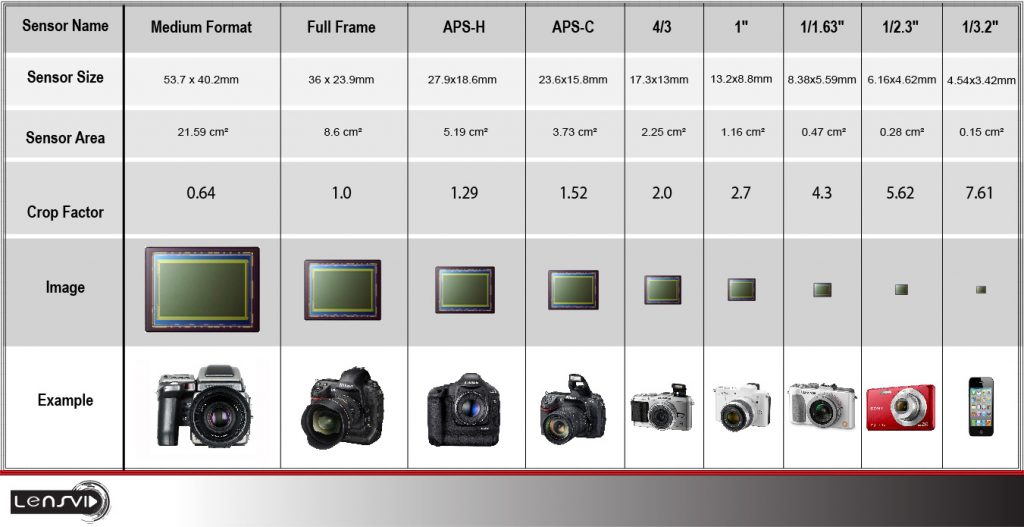
How does it work ?
In general it works like this. The bigger the sensor the more light it captures, more (fine) detail and less noise. So you can say that MF should be the best and M4/3 the worst. But is this true ? I don’t think so. Not anymore at least. In the old days yes, but now not anymore. From all the sensor sizes I think M4/3 made the best development in Image Quality over the same development timeline as other sensors. APS-C sensor size development has also improved. You have to go into the details and start pixel peeping to see the differences. What I think is that MF stood a bit still over the same development time line. The market for MF is quite small compared to Full Frame and APS-C. Cameras with MF sensors cost a fortune as well. So development of MF didn’t go as fast as with the other formats.

At this point the best Full Frame sensors have nearly closed the gap with MF. Actually there is no reason to get a MF unless you need the high amount of MP (Megapixels) and demands the ulimate sharpness from corner to corner when you zoom in on a photo. The MF business sees this too and you see prices coming down a lot. Now you can get a semi MF camera (the Fujifilm GFX50s) with 1 lens for 6,500USD. That used to be 30,000USD !!
At this point, the highest MP on a Full Frame sensor is about 50MP. On APS-C it’s about 24MP. On M4/3 it’s about 20MP. That is where MF outperforms it all: 50MP is the STARTING point ! With MF you can get 80 and even a 100MP. As technical development goes on and on, we will see more MP’s in all sensor sizes in the near future. We will see also better processing modules in cameras and probably better sensors.
I’m not going to explain how sensors work. There is a lot of tech info on the internet so look there. But in short: it is a cooperation. The sensor captures light through a lens and the data that is being recorded by that sensor is being processed in camera and stored on a SD card as an image file. So there are 3 things: The Sensor, The Lens and the Processing unit in the camera. you can see it like this: The better the lens, the ‘better’ the light that is being captured and the better the processing the better the image will be. And of course various other combinations are possible. But in the end it all comes down to a combination of these 3. But ! Don’t think that the best of these 3 gets you the best shots. The non-material factors are also important. If you go out with bad light or you don’t know how to expose right, you still capture a ‘bad’ photo. No matter if you got the best gear giving you the best combo of these 3.
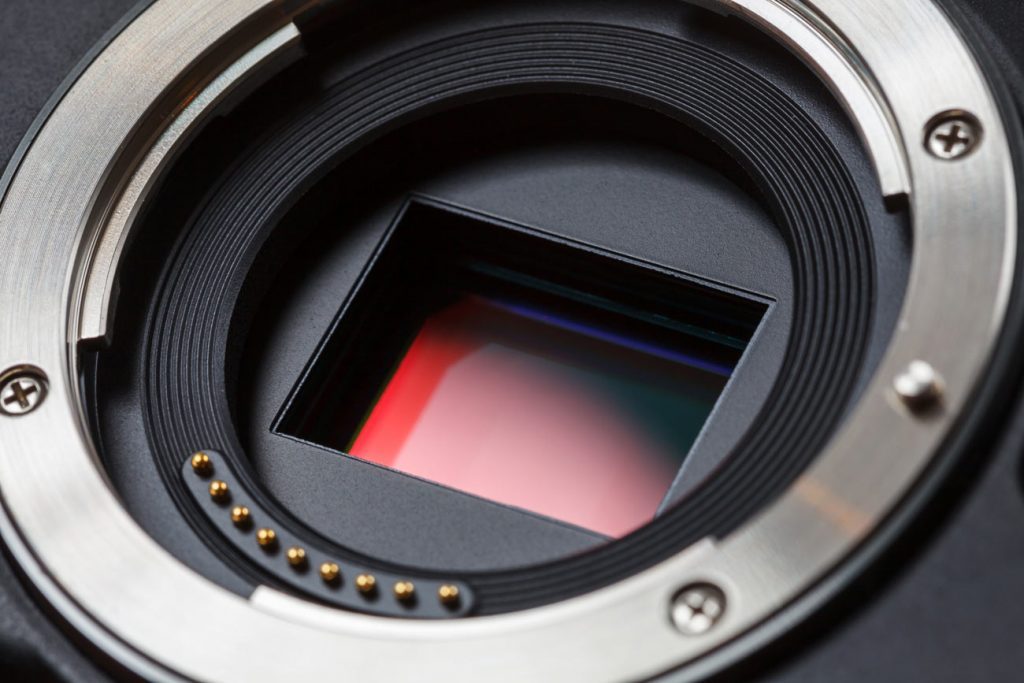
So what to choose ?
That’s a tricky one. It all depends on what you want, how you shoot, what you shoot, what you can afford and what you gonna do with it. In my previous post ‘For the beginner photographer: how to start with photography – Part 1’ I already explained what do you want to shoot and what are you intend to do with it ? Having a plan and knowing what you want is quite important. At the point that you start looking at gear, you automatically start looking at sensor size.
At the moment there is so much choice on the market. Different systems, different sensor sizes, from lots of brands. What I suggest is that you make a list. Write down what you shoot and how often. Second, set your budget. Photography gear can be very very expensive. In my post ‘For the beginner photographer: how to start with photography – part 2’ I explained a bit about gear. Setting your budget points you to a market segment of cameras which are in your price range. And forget about the articles that say: ‘this is a street photography camera, this is a landscape camera’. With any camera on the market you can shoot different types of photography. Really, cameras that suppose to serve a type of photography better than others is all a bunch of bull shit 🙂
Lenses vs. Sensor size
Once you have set your budget and you know what to shoot (your list) then it is time to start looking around. Go online compare different cameras. There are lots of websites that can give you a side-by-side specs comparison from different types and brands within your price range. TIP: with setting your budget and knowing what you want to shoot it is important that you think about which focal lenghts you want to cover. Example: if you think you are a landscape shooter, or you will shoot landscapes mostly, you probably want to go wide and not so long. You are talking about lenses here ? Yes i am, and why ? Because cameras have different sensor sizes and lenses depend on that. If you put a full frame lens on a APS-C body you get a different focal length.
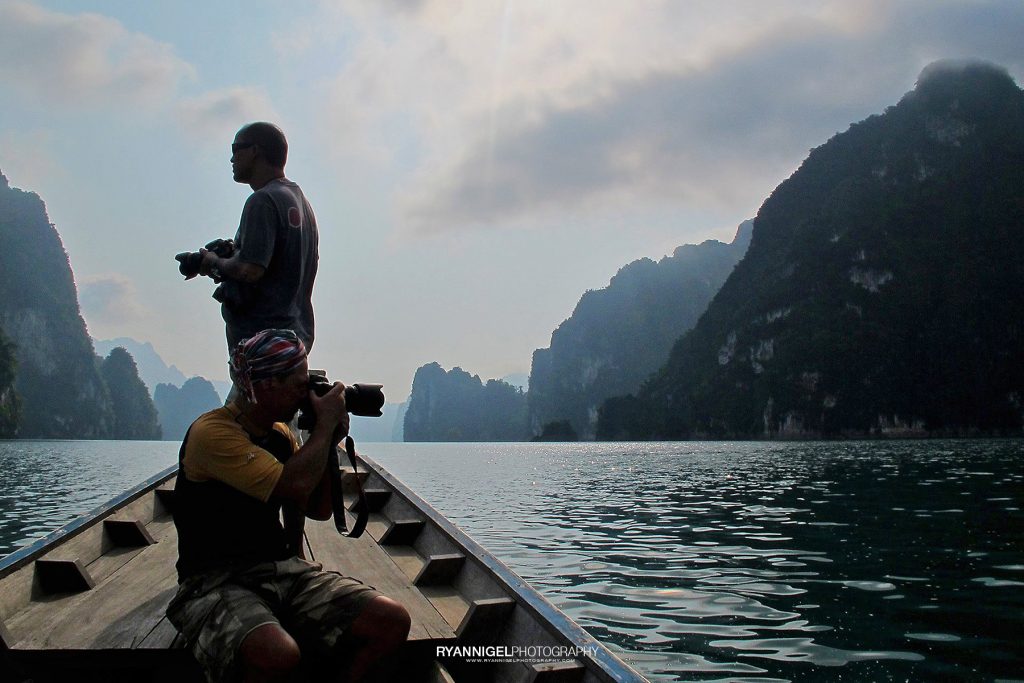
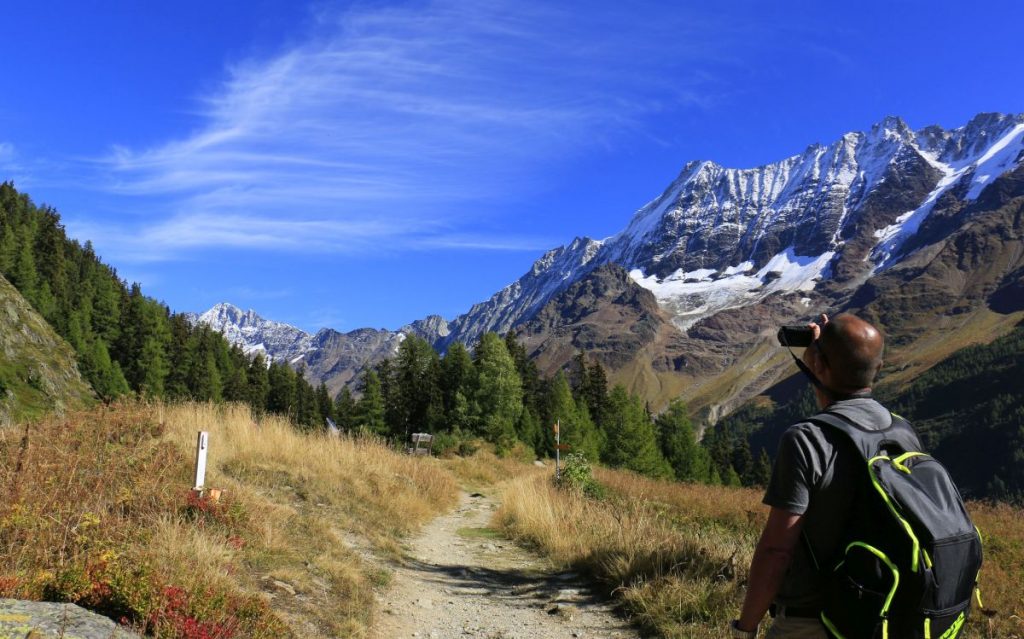
Example: Suppose you have made up your mind and you want an APS-C body, then the sensor size is 1,5 times smaller than a Full Frame sensor. That means, if you want a 24-70mm full frame lens on that camera you get a different focal length. 1,5x 24 = 36 and 1,5x 70 = 105. So your 24-70mm focal length becomes a 36-105mm focal length lens on an APS-C sensor. Same lens but different field-of-view due to the smaller sensor. Reverse it doesn’t always work. Only the higher end Full frame cameras offer the feature that you can use APS-C lenses on Full Frame camera bodies.
When I set my budget and I know what I want to shoot I look which focal lengths I need cover. In my case an APS-C sensor size body is good enough for me. Also in my plan I have no ambition to upgrade to Full Frame in the near future. So I started looking for APS-C lenses only. I have found out that I shoot landscape, street and food mostly, so I need lenses that can shoot wide and I don’t need very long lenses. So the focal length that I need to cover for my needs is 10mm to 50mm in APS-C format. The eqv. of this in Full Frame format is 15-75mm. When i set my budget for gear I need to take the price of 2 lenses in it.
Recap: What have I done here ?
1 I have made a plan
2 I have found out what I want to shoot (my list)
3 I have set my budget without breaking the bank (what I can afford)
4 I have found out what is good for me within my budget (I went online to find info)
5 I am about to try out gear.
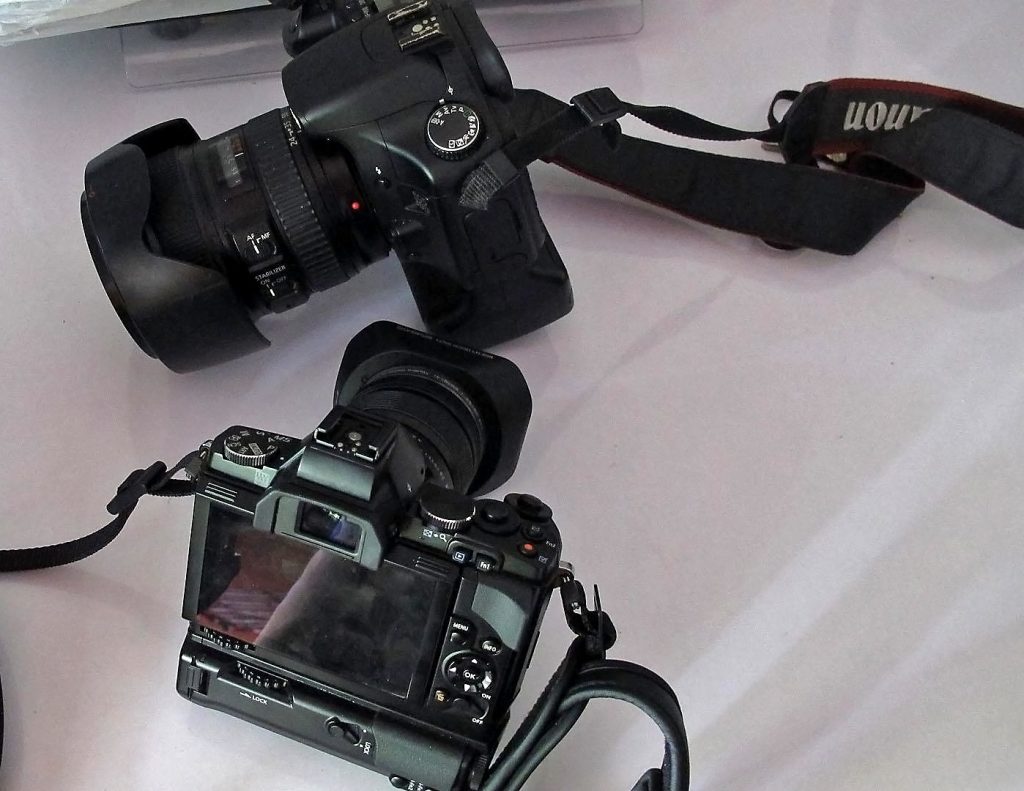
Point 5 is interesting. Why try out gear ? Well you need to feel comfortable with gear. My advise is to try different systems, different formats in the range what is affordable for you. When you shoot photos you want to feel comfortable with the camera and lens that you have in your hand. When I finally bought my Fujifilm X cameras I have tried Canon, Nikon Olympus, Pentax and Fujifilm. For me it turned out to be the best package in the price range that I could afford. I tried Full Frame, APS-C and M4/3. I tried various models with various lens set ups. I tried to increase my budget, I tried to nibble it down. And that is actually the message I want to give: try before you buy. Find a place where you can rent gear and try it.
Back to the topic
So does sensor size matter ? Now that we all know this, up to a certain point sensor size doesn’t matter. Sensor size does matter once you get more deep into photography and especially if you gonna make large prints. But for the beginner photographer who shoots for web use and small prints, sensor size doesn’t matter anymore. Even the tiny sensors from M4/3 produce very good photos for web use and small prints. At base ISO APS-C and M4/3 sensors are nearly as good as Full Frame sensors and it is really hard to see the differences. And Full frame compared to MF, well also there it is hard to tell. The differences are more in the details like color, capturing fine detail, sharpness across the frame, etc. For example: the new Nikon D850 stands its ground by resolution, fine detail, color, noise, etc. compared to some MF cameras at less than half the costs.
The video below gives a good example of shooting with a Full Frame sensor and a APS-C Sensor.
We keep coming back to the same questions. What do you need ? What do you shoot ? How are you going to use it ? The answers to these questions determine if you need a full frame sensor or you can do with something else like APS-C or M4/3. And there are of course lenses. If you shoot portrait, and even if you don’t print them, you might want to choose a Full frame sensor because of capturing the detail, the skin color, etc. And for full frame sensors you have an unlimited choice of lenses tailored to your needs. For APS-C there are not so many quality lenses out there.
The photography business have evolved and matured quite a bit. The products that you can buy are tailored to specific needs. Very fast prime lenses for portrait photography, very long and faster zoom lenses for wildllife, etc. And the compatibility between them. You can get all kinds of adaptors to use Canon lenses on Sony camera systems for example. There is really a lot going on and a lot is possible. For you it is important that you know what you need for your type of use. And don’t let gear fool you. There are entry level Full frame cameras that cost less that the high end APS-C cameras. The differences are all in the feature set of each camera. Up to you if you need it.
Here are some links related to the topic
SIDE BY SIDE IMAGE COMPARISON: FULL FRAME DSLR VS MICRO FOUR-THIRDS MIRRORLESS
Is a Full Frame Camera Really Worth It? D610 vs D7100 Real World Test
WHY FULL FRAME CAMERAS ARE BECOMING REDUNDANT (FOR MOST)